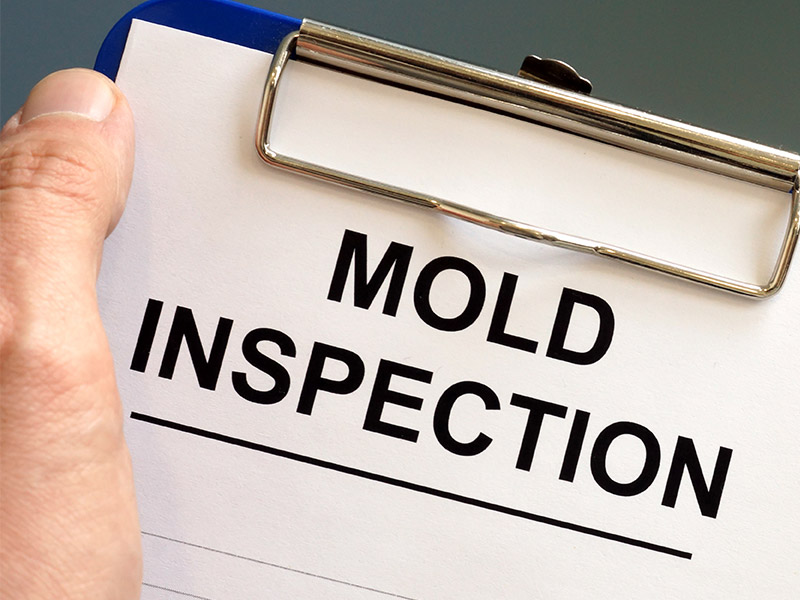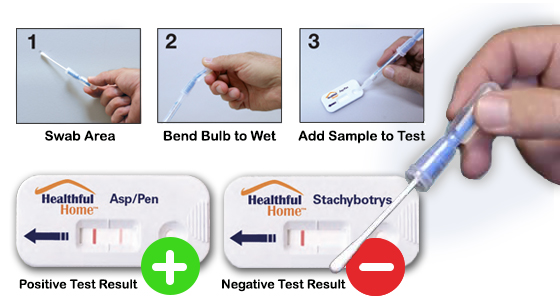The Function of Mycotoxin testing Services in Food and Feed Security
Wiki Article
Why Mycotoxin Screening Services Are Vital for Protecting Public Wellness
The importance of mycotoxin screening solutions in safeguarding public health can not be overemphasized. Mycotoxins, toxic compounds generated by fungis, posture significant wellness threats such as liver damages and cancer when existing in food and feed.Recognizing Mycotoxins
Understanding mycotoxins is important for guaranteeing food safety and shielding public health and wellness. Mycotoxins are harmful compounds generated by particular types of fungis, frequently found in food and feed plants.The presence of mycotoxins in foods items can endanger their safety and security and top quality. They are immune to traditional food processing methods, thereby lingering in the food supply chain and posing possible dangers. Governing bodies worldwide, such as the Food and Agriculture Company (FAO) and the World Health Company (WHO), have actually set rigid limits on appropriate degrees of mycotoxins in food to minimize their unfavorable results.
Effective mycotoxin administration involves detailed monitoring and screening to spot and evaluate their levels in agricultural items. This aggressive technique assists in determining infected batches early, thus stopping their intro right into the market. Carrying out rigorous mycotoxin controls is vital for keeping food safety and security requirements and guarding customer health.
Health Dangers of Mycotoxins

Exposure to mycotoxins presents substantial health and wellness dangers to both pets and people, demanding cautious surveillance and control procedures. In human beings, mycotoxins such as fumonisins, aflatoxins, and ochratoxins can cause a variety of damaging effects, consisting of liver damage, kidney toxicity, immune reductions, and also cancer causing effects.

Provided these severe health effects, it is necessary to carry out robust mycotoxin screening protocols. Precise discovery and quantification of mycotoxins in food and feed are necessary to reduce wellness risks and make sure public and animal safety and security.
Typical Sources of Contamination

In addition to grains, nuts such as almonds, pistachios, and peanuts are very prone to mycotoxin contamination. Aflatoxins, a powerful form of mycotoxin, are generally located in these nuts, specifically when storage problems are suboptimal. Dried fruits, including apricots, figs, and raisins, also existing productive grounds for fungal growth image source as a result of their high sugar content and moisture-retaining properties.
Moreover, contamination is not restricted to raw agricultural items. Processed foods, pet feeds, and dairy products can likewise have mycotoxins if the initial active ingredients were infected. This extends the danger of direct exposure throughout the food supply chain, necessitating stringent tracking and control steps.
Comprehending the usual the original source resources of mycotoxin contamination is important for applying effective preventative techniques. Alleviating these risks at the resource can dramatically reduce the incidence of mycotoxin-related health issues, securing public health and wellness.
Checking Techniques and Procedures
Efficient mycotoxin administration depends upon the accuracy and reliability of testing methods and protocols. Advanced analytical strategies are used to detect and quantify mycotoxins in different substratums, making certain public health security. High-Performance Fluid Chromatography (HPLC) combined with mass spectrometry (MS) is a gold requirement in mycotoxin testing, supplying high level of sensitivity and uniqueness. This click here for more info approach permits the accurate detection of several mycotoxins in intricate matrices, such as food and feed products.One more commonly used approach is Enzyme-Linked Immunosorbent Assay (ELISA), which uses fast screening and is cost-effective for huge sample volumes - Mycotoxin testing Services. ELISA packages are helpful due to their ease of usage and quick turnaround time, making them ideal for on-site testing
Sampling methods are similarly essential. Proper tasting makes sure that the collected samplings are representative of the whole batch, therefore decreasing the risk of incorrect downsides or positives. Adherence to established standards, such as those given by the International Organization for Standardization (ISO) and the European Committee for Standardization (CEN), is vital for maintaining consistency and integrity across screening methods.
Strenuous recognition of these methods and methods is vital. It ensures reproducibility and precision, thereby fortifying the stability of mycotoxin monitoring systems.

Benefits of Normal Evaluating
In the realm of food safety and security and agricultural quality assurance, the advantages of regular mycotoxin screening can not be overstated. Consistent testing makes certain that agricultural items satisfy safety criteria, thus shielding consumers from the hazardous results of mycotoxins, which consist of liver damages, immune suppression, and even cancer. By recognizing polluted sets early, routine testing enables for timely intervention, preventing such products from getting in the food cycle.In addition, normal mycotoxin testing is crucial for maintaining the honesty and credibility of food manufacturers and providers. Firms that commit to routine testing show their devotion to public health and wellness and food safety and security, thereby getting customer count on and commitment. This aggressive strategy can likewise reduce financial losses linked with product recalls, legal obligations, and potential trade limitations.
Furthermore, governing conformity is a significant element of the agricultural sector. Regular mycotoxin testing guarantees adherence to global and nationwide standards, facilitating smooth trade operations and market gain access to. This is specifically crucial for exporters who should satisfy rigid safety and security criteria enforced by importing nations. Inevitably, normal mycotoxin screening not just shields public wellness yet also fortifies the economic stability and global competitiveness of the agricultural sector.
Verdict
Mycotoxin screening services play an important function in public wellness security by recognizing and minimizing the threats presented by hazardous fungal compounds in food and feed. By discovering contamination early, these services stop major health concerns such as liver damage and cancer cells, making sure compliance with governing standards. Normal screening enhances customer count on, supports the stability of the agricultural market, and ultimately adds to the protecting of food safety and public wellness.The importance of mycotoxin screening services in guarding public health can not be overemphasized.Understanding mycotoxins is vital for guaranteeing food safety and security and securing public wellness. Mycotoxin testing Services. Regulative bodies worldwide, such as the Food and Farming Organization (FAO) and the World Wellness Company (WHO), have established rigorous limits on appropriate degrees of mycotoxins in food products to alleviate their damaging effects
Ultimately, routine mycotoxin screening not just secures public wellness but also fortifies the financial security and global competitiveness of the agricultural field.
Mycotoxin screening services play a vital duty in public health defense by identifying and reducing the dangers presented by poisonous fungal compounds in food and feed.
Report this wiki page